Overall, I think that Kevin Cloninger's speech was a little different than what I expected in terms of where his speech started off and ended. I thought it was going to be more focused on how to promote the well being of students in a classroom but instead he discussed issues of well being in our society. I found some of his information useful to know about some problems that my future students could be facing which made me think of ways that I could help them and give students the opportunity to be happy and healthy. His speech did make me think outside of the box and realize the many purposes for education that people do not normally think of besides preparing students for future jobs but to create people to live well and can use that well being to better others.
From his speech, I thought of several ways that I could use his discussion of well being and take it into a classroom. For example I think that kids will learn better and get more out of their education when they want to learn and many times this only happens when they have a good sense of wellbeing. To take this into a classroom, I would create some lesson plans that would allow students to think about their well being such as activities or projects where students could reflect and discuss their personal values and beliefs . This would help students to understand who they are as individuals and maybe learn the reasons why they are getting an education. I would also incorporate some forms of physical well being such as including education on nutrition and exercise.
I think that it would be very good to use Kevin Cloninger's ideas of well being in a classroom as an educator because I have the responsibility to teach my students who will be our future leaders. By promoting well being of my students, it would create a positive environment which would in turn help students be more involved in their learning. I think that also by encouraging well being in the classroom, I could encourage a healthy lifestyle for the students and even their parents if they are aware of my teaching of well being. Also this would give me the opportunity to use creativity in a classroom to make lesson plans about well being other than basic subjects.
Overall, I think that math night went really well and my activity, the "Pattern Walk" worked really well with the grades that came. Even though there was not as much people who showed up as we thought, it almost worked better with my activity to have smaller groups because we could help the kids with the activity and their parents could play with them. We also had some kids who were younger than kindergarten who had difficulties following the game and walking around the square following the pattern, and realized that this game is good for specifically K through forth or fifth grade. I think that this math night helped me to develop skills as a future teacher to learn ways to explain things such as math and learn to change plans when things aren't working in a classroom.
I noticed many differences from how the kids played this game at family math night to the fifth grade who we practiced on. The fifth graders could easily understand that the game was about patterns and they could repeat the pattern once they knew and saw it written on the whiteboard. On the other hand, at family math night, the kids had more difficulty following it and the young ones would sometimes get confused knowing which way to go around. Also I think that the game was way more interesting for kindergarteners through about 3rd grade because they had to really focus to repeat their patterns and count the number of spaces they walked.
From this activity, I noticed many different things about student thinking. I saw that there were many students who caught on to the game very quickly. Others had to be physically shown what to do around the pattern square and some kids just had to follow what other kids or their parents were doing to catch on. Also I noticed that some kids thought about following the pattern differently by saying that they could just count the pattern going around the square in one direction. I saw that a lot of the kids understood that the purpose of our game was to follow a pattern as we explained to them and others just focused on counting the steps they took.
By observing the ways the kids thought about my activity, I found many effective techniques of teaching that I could use in the classroom. For example, I found that it is very important when explaining something to repeat it many times. When you repeat it many times, it allows you to explain something in different ways that can click differently with different kids. In my activity I saw that the kids understood better when I explained a couple ways and also demonstrated. Also I found that as a teacher you have to improvise sometimes to make things work best in a classroom. In my game, we had to change some things because it wasn't working at first such as just telling the kids the pattern, we learned that they need to see it on a white board to be able to do it on their own.
Title: Pattern Walk
Objective: Patterns and counting
Materials:
-Numbered Carpet Squares (at least enough for each student)
-White Board and Marker
-"Winner Bag" with number cards #1-# of squares
-Pattern bag with number cards #1-#10
-CD player and age appropriate CDs
Set Up:
-Before students arrive, arrange carpet squares in numerical order, in the shape of a rectangle.
-Make sure each bag has correct numbers
-Prepare white board
Adaptions:
-For younger students, use smaller numbers and a two part pattern instead of three or four
-For the visually handicapped, lead the student around the squares, and make numbers on the cards bigger
Before Playing: Review with students the concept of patterns
How to Play:
-Start by having the students find a carpet square to stand on
-Next have one student draw a number from the "winner" bag and record it on the white board
-Now depending on the age, have 2-4 students draw a number from the pattern bag. These numbers will become the pattern movement. Example: Forward 2 backward 5.
-Record the pattern on the white board for the students to use as a reference.
-Play the music
-As the music plays, have the students walk around the carpet squares using the pattern
-Randomly stop the music and whoever is on the winning number, is the winner.
-Repeat the process to play more rounds. Be sure to draw new numbers each round.
-Have fun!
-If the students are having trouble, play with them
-Adapt the numbers for the pattern based on ages
For my weekly, I decided to focus on area and found many ways to do a single problem that will be very important in teaching kids because of their different forms of learning. First I worked on thinking of all the possible ways to see a shape and find area by figuring geometrical formulas and visually moving pieces of the shapes around. In a classroom, there is going to be many different learning styles and I need to be able to work with each one to teach math in a way that everyone learns to understand. I decided to work with the two shapes below to figure area and different ways to see and solve a single problem so I can use this technique in the classroom.
To find the area of the triangle below, I would teach students to count the number of full squares inside the shape and find there to be 10 and then see that there are half squares. These five triangles add up to 2 and 1/2 squares or 2.5 which equals 12 and 1/2 or 12.5.
10+1/2+1/2+1/2+1/2+1/2= 12 and 1/2 10+.5+.5+.5+.5+.5= 12.5
Area could also be found using the geometry formula for a triangle, A=1/2bh or Area=1/2base x height. To solve this you would count the base which is five across and the height which is also five and plug them into the formula.
A=1/2(5)x(5) A= 1/2 x 25 A= 12.5 or 12 and 1/2
To find the area of the parallelogram, I solved it similar to the triangle by counting the amount which is 30 whole squares in the middle. Then figure if you cut off the triangles on each side and add them together it forms a rectangle that is 3 x 5 which has an area of 15, (A=bh) and then you would add it to 30 to equal 45. The area could also be done the same way by using the formula of A=1/2bh on each side triangle.
To compare the methods used to find the area of the two shapes, I found that to work with any shapes you can use a mathematical formula, or just visually count squares. Some kids may find it easier visually, to put the half squares to together and then count the total area and others work better with the area formulas. In a classroom, I think that it is so important to teach concepts in many different ways because it is difficult to make math click with every student. By using different methods, kids can learn in their own style and it is good to provide different ways to approach a math problem so kids can form new ways of thinking. By forming those skills, students can use the abilities in math problems throughout their lives.
For my weekly work, I decided to work on improving my family math night activity and think of ideas that could make it a better game for many different math abilities. For my game, my partner and I created a "cake walk" number game where kids have to follow patterns by walking around a circle with numbered squares. The kids had to pull a winning number from a hat to see which square would be the winning spot when music is played and stopped. Then the kids had to pick other numbers from a hat depending on the grade level and follow the pattern of numbers by going back and forth around the circle following the numbers that were drawn. I found out which parts of the game were fun for kids, which need improving, and how to reinforce the math concept of patterns.
The idea of my activity was to work with patterns using numbers and help kids to work with addition and subtraction with a game that uses motion to learn. For the younger kids we will do simple patterns such as two or three numbers but the older kids will do more. To incorporate math into the game for older kids I noticed and will use the idea that as kids moved forward and back, they move forward or back a certain net amount. For example if they moved forward seven and back five they will be moving up two spaces each time they repeat the pattern. This can also be calculate if there are three or more numbers added to the pattern and kids see this math at the end of each pattern.
Example: 7 forward + 5 backward = total two spaces forward
6 forward + 4 backward + 3 forward= total five spaces forward
4 forward + 7 backward + 2 forward + 3 backward= total four spaces backward
Overall I think that my math activity went very well because the kids said that they enjoyed the game and wanted to keep playing. I found that it was hard for them understand the whole concept at first and we had to demonstrate and participate in the cake walk with them at first until they understood. Also it was appropriate for their age and will be for the younger ones as well. When we asked them for feedback all of the groups said that we should make the number patterns smaller for younger kids because it was challenging to follow large patterns.
To improve this math game, I came up some ideas that would make the game run more smoothly and help incorporate more patterns. First of all I think by having a white board to write the number patterns down would help kids to visually see the patterns and follow them more easily on their own. Also I think that adding more numbers to the squares would be beneficial because there were blank square between numbered ones and sometimes there was two winners because a winning number was in between two kids. I think that this activity is very successful in making math patterns fun and the students feedback has greatly helped to improve it.
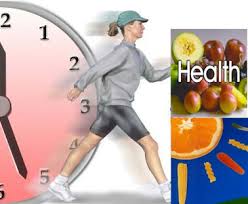
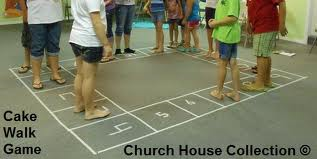
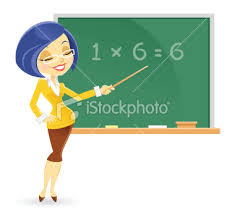
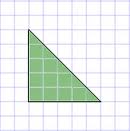
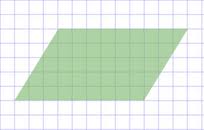
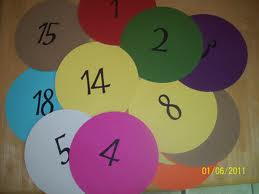

 RSS Feed
RSS Feed